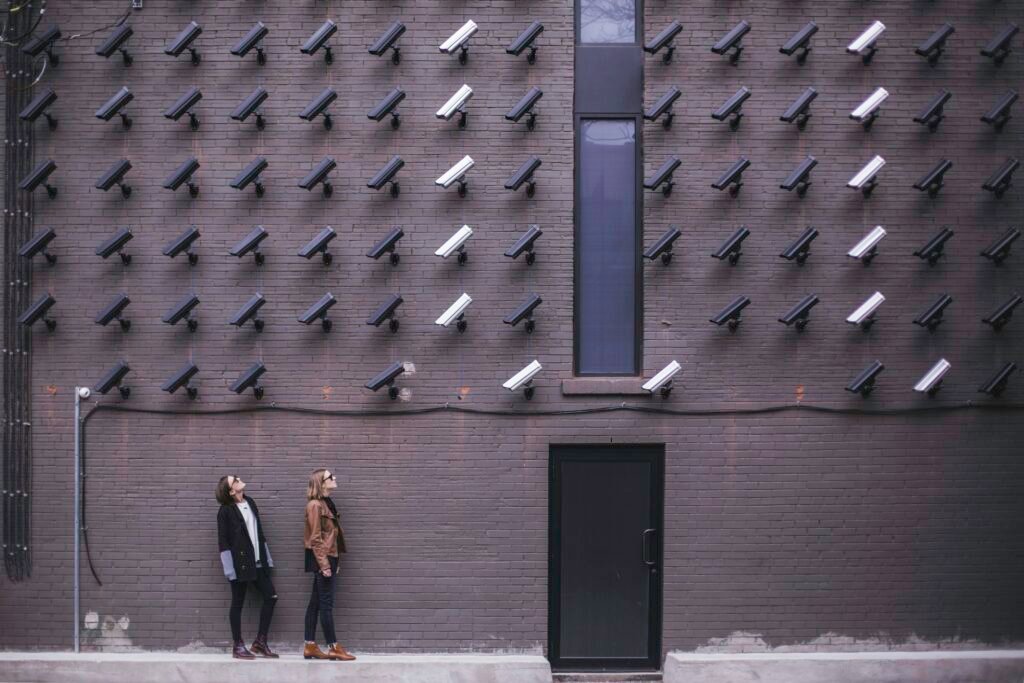Welcome to the future of security with biometric and facial recognition features that can keep your belongings safe and sound. Say goodbye to forgotten passwords and lost keys as these advanced technologies provide a convenient and reliable way to protect your valuables. With the touch of a finger or a simple scan of your face, you can rest assured that your belongings are secure and accessible only to you. Say hello to peace of mind with biometric and facial recognition safe features. Have you ever worried about the safety of your valuables when you’re not around? Luckily, advancements in technology have made it easier than ever to secure your belongings with biometric and facial recognition features. In this article, we will explore the benefits and features of using biometric and facial recognition technologies to keep your possessions safe.

This image is property of images.unsplash.com.
What is Biometric and Facial Recognition Technology?
Biometric and facial recognition technology uses unique physical characteristics to identify and authenticate individuals. Biometric data can include fingerprints, palm prints, iris scans, and facial features. These technologies are often used in security systems to grant access to authorized personnel.
Biometric and facial recognition technology is incredibly accurate and secure, making it an ideal choice for keeping your belongings safe. Let’s dive into the details of how these features can benefit you.
Why Choose Biometric and Facial Recognition Features?
Imagine never having to worry about losing keys or forgetting a password to access your safe. Biometric and facial recognition features provide a convenient and secure way to protect your valuables. By using unique physical characteristics as identifiers, you can have peace of mind knowing that only authorized individuals can access your belongings.
The convenience of biometric and facial recognition technology cannot be overstated. No more fumbling with keys or trying to remember complex passwords. With a simple scan of your fingerprint or face, you can quickly and easily access your safe.
How Does Biometric and Facial Recognition Work?
Biometric and facial recognition technology works by capturing and analyzing unique physical characteristics of an individual. These characteristics are then converted into digital data and stored securely in a database. When a person attempts to access a secure area or device, the system compares their biometric data to the stored data to verify their identity.
Let’s break down the process of how biometric and facial recognition technology works:
| Step | Description |
|---|---|
| 1 | Capture: The system captures biometric data, such as fingerprints or facial features, using specialized sensors. |
| 2 | Analysis: The captured data is analyzed to extract unique identifying features. |
| 3 | Template Creation: A digital template of the biometric data is created and stored securely in a database. |
| 4 | Matching: When a person tries to access the system, their biometric data is compared to the stored template. |
| 5 | Verification: If the biometric data matches the stored template, the person is granted access. |
By following these steps, biometric and facial recognition technology can provide a high level of security and accuracy in verifying identities.

This image is property of images.unsplash.com.
Benefits of Biometric and Facial Recognition Features
There are numerous benefits to using biometric and facial recognition features to secure your belongings. Let’s explore some of the key advantages:
-
Enhanced Security: Biometric and facial recognition technologies provide a higher level of security compared to traditional methods such as keys or passwords. Since these physical characteristics are unique to each person, it is nearly impossible for unauthorized individuals to gain access.
-
Convenience: Biometric and facial recognition features offer a convenient way to access your safe without the need for keys or passwords. A simple scan of your fingerprint or face is all it takes to unlock your belongings.
-
Accuracy: Biometric and facial recognition technology is incredibly accurate and reliable. The chances of a false positive or false negative identification are minimal, ensuring that only authorized individuals can access your belongings.
-
Non-Transferable: Unlike keys or passwords, biometric data cannot be shared or stolen. Your unique physical characteristics are tied directly to you, making it impossible for someone else to use them to gain access to your belongings.
-
Ease of Use: Biometric and facial recognition features are easy to set up and use. The process of enrolling your biometric data is quick and straightforward, and accessing your safe is as simple as a quick scan.
Types of Biometric and Facial Recognition Features
There are several types of biometric and facial recognition features that you can choose from when securing your belongings. Each type offers its own set of advantages and may be more suitable for certain applications. Let’s take a look at some of the most common types:
Fingerprint Recognition
Fingerprint recognition is one of the most widely used biometric technologies. It works by capturing an image of an individual’s fingerprint and converting it into a digital template. This template is then compared to stored data to verify the person’s identity. Fingerprint recognition is fast, accurate, and easy to use, making it an excellent choice for securing safes and other valuable assets.
Facial Recognition
Facial recognition technology uses unique facial features to identify individuals. By analyzing factors such as the distance between eyes, nose, and mouth, facial recognition systems can create a digital template of a person’s face for authentication. Facial recognition is convenient and non-invasive, making it an ideal choice for securing your belongings without the need for physical contact.
Iris Recognition
Iris recognition technology uses the unique patterns of the iris in the eye to identify individuals. The iris has a complex structure that is highly specific to each person, making it an excellent biometric identifier. Iris recognition is incredibly accurate and secure, as the chances of two people having the same iris patterns are extremely low. This technology is commonly used in high-security applications where accuracy is paramount.
Palm Vein Recognition
Palm vein recognition technology captures the vein patterns in an individual’s palm to create a unique identifier. Vein patterns are complex and difficult to replicate, making palm vein recognition highly secure. This technology is contactless and hygienic, as it does not require physical contact with the scanning device. Palm vein recognition is ideal for applications where security and convenience are top priorities.

This image is property of images.unsplash.com.
How to Choose the Right Biometric and Facial Recognition Features
When selecting biometric and facial recognition features for securing your belongings, it’s essential to consider your specific needs and preferences. Here are some factors to keep in mind when choosing the right technology:
-
Security Level: Consider the level of security you require for your belongings. Some biometric technologies offer higher levels of security than others, so choose one that aligns with your security needs.
-
Ease of Use: Look for biometric and facial recognition features that are user-friendly and easy to set up. A seamless user experience will ensure that you can quickly access your belongings without any hassle.
-
Application: Think about where you will be using the biometric technology. Some features may be more suitable for home safes, while others are better suited for commercial or high-security environments.
-
Accuracy: Choose a biometric technology that offers a high level of accuracy and reliability. Ensuring that the system can accurately verify your identity is crucial for maintaining security.
-
Budget: Consider your budget when selecting biometric and facial recognition features. Some technologies may be more costly than others, so choose one that fits within your financial constraints.
By taking these factors into account, you can select the right biometric and facial recognition features to secure your belongings effectively.
Conclusion
In conclusion, biometric and facial recognition features provide a highly secure and convenient way to protect your valuables. By using unique physical characteristics as identifiers, these technologies offer enhanced security, accuracy, and ease of use. Whether you choose fingerprint recognition, facial recognition, iris recognition, or palm vein recognition, you can rest assured that your belongings are safe and accessible only to authorized individuals.
So, why wait any longer to secure your valuables with the latest biometric and facial recognition features? Upgrade your security system today and enjoy the peace of mind that comes with knowing your belongings are protected by state-of-the-art technology.



